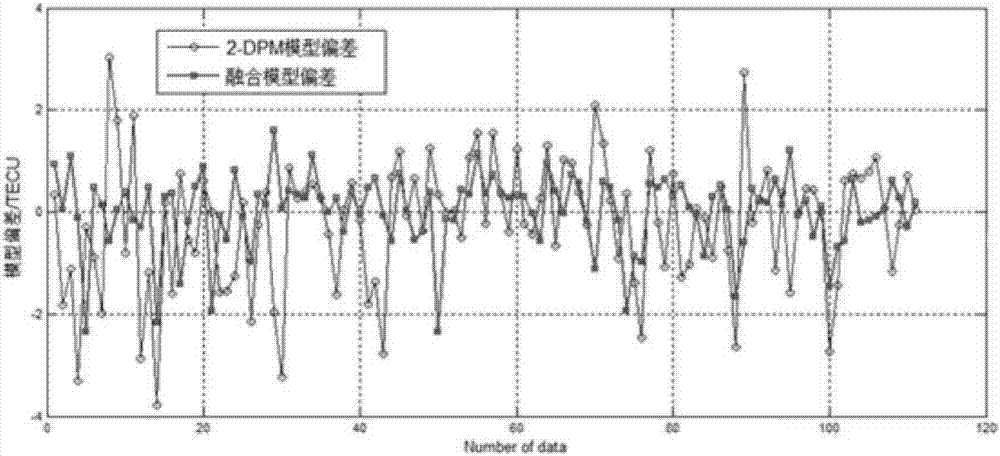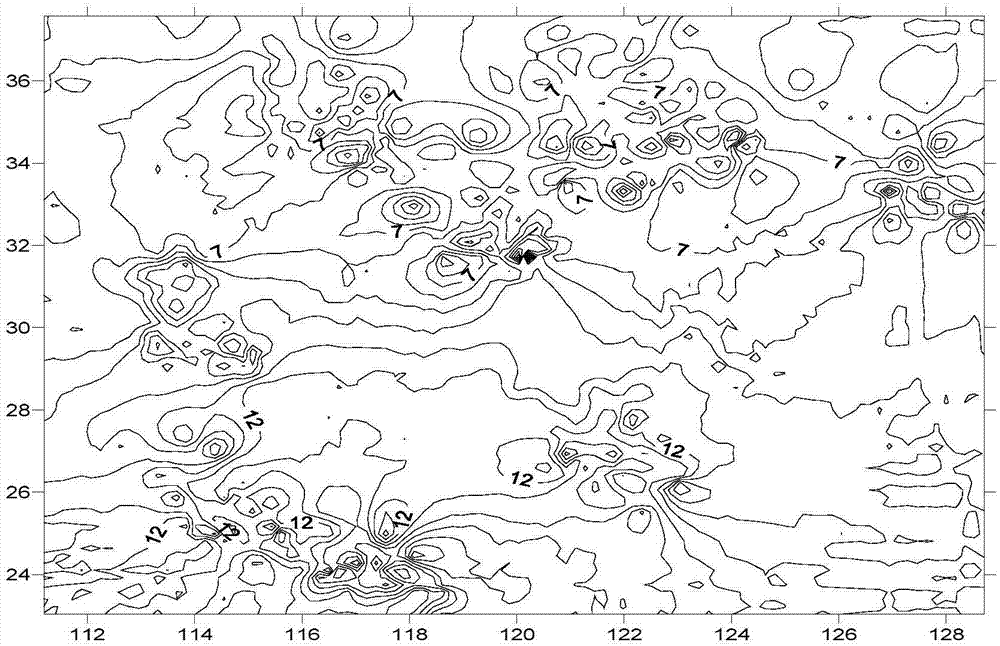BP-polynomial model fusion-based regional ionized layer vertical total electron content modeling method
A technology of polynomial model and total electronic content, which is applied in the field of global navigation systems, can solve problems such as model errors, achieve the effect of improving accuracy, good stability, and solving model error problems
- Summary
- Abstract
- Description
- Claims
- Application Information
AI Technical Summary
Problems solved by technology
Method used
Image
Examples
Embodiment 1
[0063] This embodiment discloses a regional ionospheric vertical total electron content modeling method based on BP-polynomial model fusion, including the following steps:
[0064] S11: Obtain the geographical longitude and latitude information of the puncture point of the regional observation point and the vertical total electron content information of the ionosphere at the corresponding time, and obtain information such as solar time angle difference, geomagnetic latitude and local time through known data conversion;
[0065] The data used comes from the data of 73 CORS stations in Jiangsu Province in 2010 with a cumulative day of 323 (November 19). According to the station location information, the phase smoothing pseudorange method is used to extract the relevant ionospheric data, including the puncture point (IPP ), longitude and latitude, observation time, VTEC value and other information, see Table 1 for details.
[0066] Due to the relatively large amount of data, Tabl...
PUM
 Login to View More
Login to View More Abstract
Description
Claims
Application Information
 Login to View More
Login to View More - R&D
- Intellectual Property
- Life Sciences
- Materials
- Tech Scout
- Unparalleled Data Quality
- Higher Quality Content
- 60% Fewer Hallucinations
Browse by: Latest US Patents, China's latest patents, Technical Efficacy Thesaurus, Application Domain, Technology Topic, Popular Technical Reports.
© 2025 PatSnap. All rights reserved.Legal|Privacy policy|Modern Slavery Act Transparency Statement|Sitemap|About US| Contact US: help@patsnap.com



